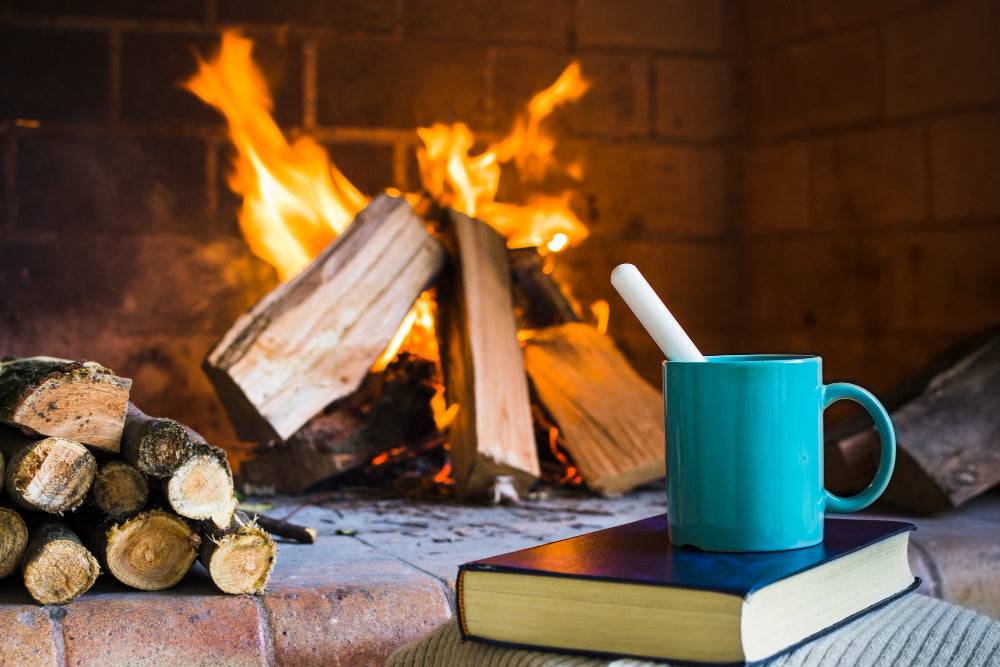When winter sets in and the temperature drops, a warm, crackling fire can be both comforting and essential. However, not all firewood is the same. Choosing the right type of wood is important for efficiency, safety and maintaining a cosy home during the colder months. In this post, we’ll walk you through the key considerations and types of wood best suited for cold weather burning.
Why Firewood Selection Matters
Using the wrong type of firewood can lead to a poor fire, excessive smoke, and even dangerous creosote build-up in your chimney. For maximum heat output and minimal effort, it’s important to select wood that burns efficiently and cleanly. This means understanding how moisture content, wood type, and seasoning affect your fire.
Hardwood vs. Softwood
The first distinction to understand is between hardwoods and softwoods.
Hardwoods
Hardwoods come from deciduous trees that lose their leaves in autumn. They are typically denser and provide longer, hotter burns, perfect for keeping a room warm on a freezing night. Some of the best hardwoods for firewood include:
- Oak – Burns slowly and produces a steady heat.
- Ash – Easy to split and burns well even when slightly green.
- Beech – Offers a high heat output but must be well-seasoned.
- Birch – Burns quickly but provides good heat; ideal when mixed with slower-burning woods.
Softwoods
Softwoods, from evergreen coniferous trees, ignite quickly but burn faster and with more smoke. While they’re useful for kindling and quick fires, they’re not the best for long, cold nights. Examples include:
- Pine – Burns quickly and can leave behind a lot of creosote.
- Spruce – Fast-burning with less heat and more smoke.
- Cedar – Pleasant aroma but not ideal for long-lasting heat.
For cold weather, always opt for seasoned hardwoods as your primary fuel source.
The Importance of Seasoning
“Seasoned” wood refers to firewood that has been dried to reduce moisture content. Freshly cut or “green” wood contains up to 50% water, which makes it difficult to burn, causes smoke, and produces less heat. In contrast, seasoned wood has a moisture content below 20%, which allows it to burn cleanly and efficiently.
How to Identify Seasoned Wood:
- Weight – Seasoned wood is lighter than green wood.
- Colour – Look for greyish or dull tones rather than bright, freshly-cut surfaces.
- Cracks – Dry wood often develops radial cracks at the ends.
- Sound – When knocked together, seasoned logs sound hollow, whereas green wood thuds.
It usually takes 6 to 12 months for wood to season properly, depending on species and drying conditions. Properly stacked and covered wood allows air to circulate while keeping moisture out.
Storing Firewood Properly
Even the best wood won’t burn well if it’s not stored correctly. Keep your firewood in a dry, elevated place with good airflow. Avoid stacking it directly against your house to prevent moisture transfer and pest issues. A firewood rack with a cover or a well-ventilated wood shed is ideal.
Best Firewood Types for Cold Weather
Here’s a summary of top firewood choices for when temperatures plunge:
Oak
One of the best for cold climates due to its density and long-lasting burn. It takes time to season but is worth the wait.
Ash
Burns cleanly and provides excellent heat. One of the few hardwoods that can be burned semi-green if necessary.
Hornbeam
Very dense and slow-burning, hornbeam delivers high heat with minimal smoke.
Beech
Offers a consistent flame and substantial heat output but must be well-dried.
For best results, use a mix of hardwoods and a little softwood for kindling. A layered approach helps with ignition and ensures sustained warmth throughout the night.
Firewood to Avoid
Not all wood is safe or efficient for burning. Steer clear of the following:
- Green or unseasoned wood – Too much moisture, inefficient burn.
- Painted or treated wood – Releases toxic fumes.
- Plywood or MDF – Contains glue and chemicals.
- Driftwood – Often salt-laden, which can corrode metal and release harmful compounds.
Using the wrong wood isn’t just inefficient it can be hazardous to your health and home.
Conclusion
Choosing the right firewood for cold weather makes a significant difference in heating your home safely and efficiently. Stick to well-seasoned hardwoods like oak, ash, or beech for the best results. Store your wood properly, avoid burning treated or wet materials, and enjoy a warm, inviting fire throughout the chilly season.
A little planning goes a long way in making those cold nights something to look forward to.
Ready to burn, low-smoke, and high-heat our premium hardwood firewood is perfect for cold nights. Delivered fast and stacked with care.
Buy now and stay warm all season long.
